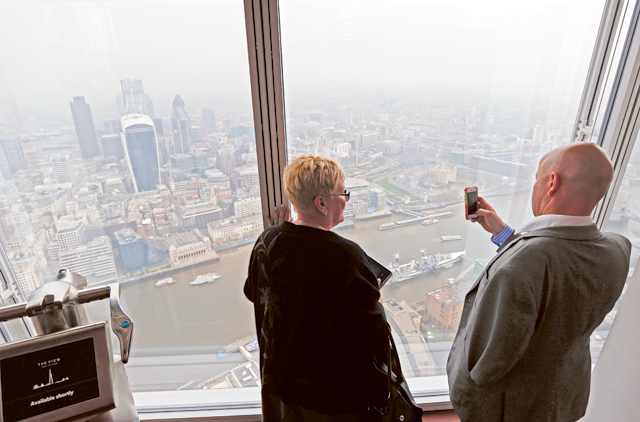London’s office market keeps them coming
Investor interest remains undimmed despite the raised rhetoric of elections and Brexit

As we head towards the end of the year and the UK’s first General Election this close to Christmas since 1923, political uncertainty stemming from the divisive Brexit referendum may finally be approaching its final chapter. To say that the political uncertainty has hindered the performance of the commercial property market in London is not entirely a true reflection of reality.
Businesses are continuing to expand and office lease rates are reflecting this, with the volume of space rented during the third quarter at 3.4 million square feet, which is higher than in the first and second quarters and in line with the 10-year average. The resilience has been boosted by continued economic expansion, driven by the tech sector and, perhaps contrary to expectations, finance and banking as well. The latter added some 18,000 net new jobs to London’s economy since the EU referendum, while the former has added an average of 1,000 jobs each week for the last five years.
These core sectors are continuing to underpin demand.
Take up rates
The market remains supply starved and has been for the last 10 years, ever since banks scaled back commercial development financing in the wake of the Global Financial Crisis. The shortage also means some occupiers are increasingly footloose and are willing to consider options outside their “home” submarkets, with availability and the quality of space critical decision factors.
The severity of the shortage is illustrated through the high level of pre-leasing activity taking place for buildings still being built. In fact, pre-lets are now at the highest level since 2007, with just over 50 per cent of all office space under construction already committed.
It remains to be seen whether the rising volume of pre-leasing is a sign of structural change leading to more build-to-suit developments. However, with environmental, social and governance (ESG) issues taking centre stage in boardrooms, issues including workplace well-being, a building’s environmental credentials, and its amount of flexible space are becoming increasingly important.
Spiking all over
The depth of demand has put upward pressure on rents, with the vast majority of submarkets now experiencing all-time high prime headline rents. And with no imminent relief in sight, our forecasts project double-digit rental growth over the next five years in most submarkets, with locations like the City Core and Southbank expected to see rent rises in the excess of 20 per cent. In the core markets of Mayfair and St. James’s, prime office rents are forecast to reach £125.00 per square foot by the end of 2023, from £112.50 today.
Third quarter thrust
The strength of the occupational market is also continuing to attract domestic and international investors. Following a weak second quarter, investment turnover partially recovered during the third, falling just short of £2.4 billion, underpinned by a resurgence in interest in London assets, particularly from international investors.
Despite improved investment turnover levels, total investment recorded is a true reflection of the depth of demand. This is largely down to a lack of stock. During the third quarter, 2.9 billion pounds was available on the market, spread across 81 assets.
This is 21 per cent down on the total for second quarter, reflecting the severity of the shortage of openly marketed investments. Potential sellers remain reluctant to bring assets to market in a politically uncertain environment and one where they are also struggling to invest their own funds. Demand for value-add, or refurbishment stock that can take advantage of pressures in the occupational market is especially strong.
Domestic demand
UK investors have leapt to the top of the leader board for London acquisitions, committing almost 1 billion pounds in third quarter, taking the nine-month total to 2.6 billion pounds. UK investors clearly sense an opportunity to secure London assets in a less competitive field, even though yields in the City have now recovered the 25 basis point outward movement from the start of this year, to stand at 4.25 per cent for 10-year income.
Despite the compressed yield in the City, London remains more attractive than many other global gateway locations. Looking ahead, we expect to see a marked increase in overseas investment activity, especially as the government continues to message that a conclusion to Brexit may be near.
We feel this will be instrumental in unlocking pent up demand as investors are waiting for greater political clarity before committing.
Faisal Durrani is Head of London Commercial Research at Knight Frank.
source : Gulf News



Comments
Post a Comment